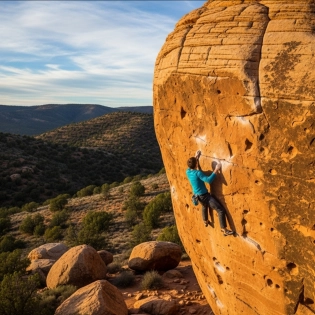Rock climbing can contribute to developing a strong and toned physique, but whether it will get you "ripped" depends on various factors. Here's some information to consider:
- Strength and Muscular Endurance: Rock climbing engages multiple muscle groups, particularly those in the upper body, including the arms, back, and core. It requires sustained effort and muscular endurance to perform challenging moves and maintain body control. Regular climbing sessions can help develop strength and muscle tone in these areas.
- Body Composition: Climbing can help reduce body fat and improve muscle definition, which can contribute to a more defined appearance. However, achieving a "ripped" physique involves a combination of factors, including diet, overall body fat percentage, and targeted strength training in addition to climbing.
- Training Intensity and Frequency: The intensity and frequency of your climbing sessions can influence your results. Climbing harder routes or problems, incorporating strength training exercises specific to climbing, and maintaining a consistent training schedule can help maximize your physical gains.
- Nutrition and Rest: A well-balanced diet that supports your training goals, including sufficient protein for muscle recovery and growth, is important. Additionally, allowing for proper rest and recovery periods between climbing sessions is crucial for muscle repair and growth.
While rock climbing can contribute to a more defined and muscular physique, it's important to note that individual results may vary. Genetics, overall training approach, and other lifestyle factors can also impact your outcomes. Ultimately, consistency, proper training techniques, and a balanced approach to overall fitness and nutrition are key elements in achieving your desired physical goals.
Read More









